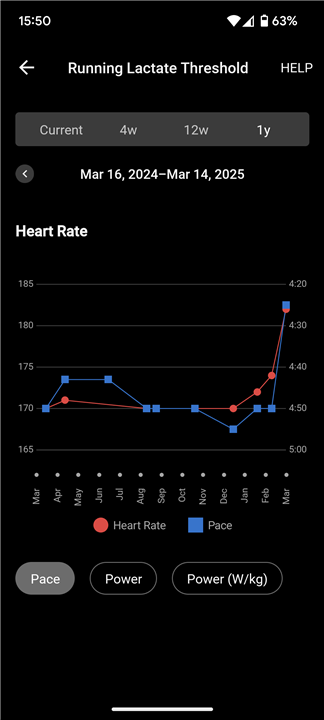Has anyone else had their Running Lactate Threshold explode since updating the watch software? Did the calculation change for this in the new release?
Today my watch updated pretty much right before I went for my run, and it's now on software 22.24. I did a workout of 5 x 1km at 5k progression pace. I wore an HRM Tri for this run. When it was completed my threshold pace notified that it jumped to 182 BPM at 4:25/km. It had previously (for years) always hovered around 170 BPM and 4:50/km. Here's my chart for the last year.



